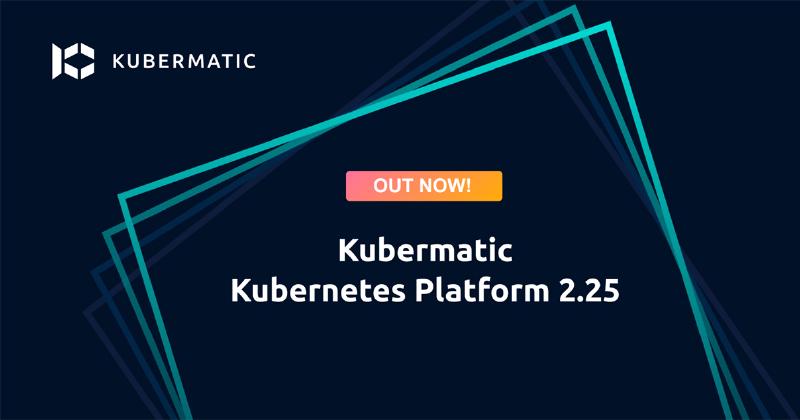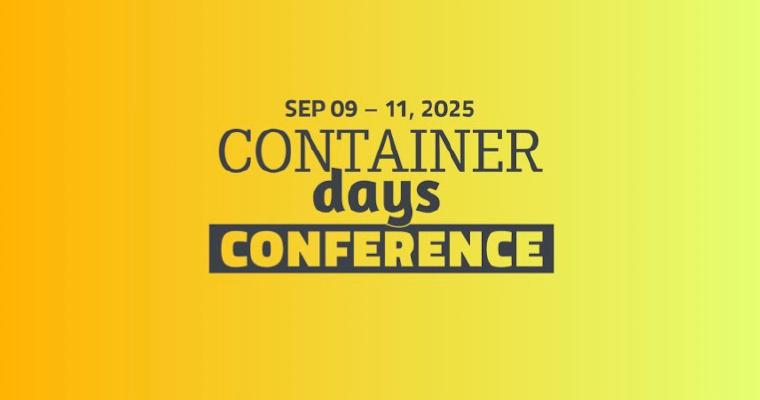We are thrilled to announce the latest update on Kubermatic Kubernetes Platform (KKP) 2.25! In this release, we’re introducing a vast range of exciting features and enhancements designed to streamline your Kubernetes operations and enhance your cloud-native journey. From leveraging the power of AI for Infrastructure Operation to automated Kubernetes backups and recovery and much more. KKP 2.25 is packed with innovative solutions that will take your Kubernetes and infrastructure operation experience to the next level.
Let’s dive in and explore what’s new!
Leverage the power of AI for Infrastructure Operation
Maximize the value of every operation with the AI-Native Infrastructure Platform, specifically designed to utilize AIOps to ensure optimal operator and end-user experiences. Leveraging AI for the operation of your infrastructure or constructing an infrastructure optimized for AI, Kubermatic offers the flexibility, automation, and confidence required for simplified operations, increased efficiency, and dependable performance at scale.
In KKP 2.25, K8sGPT has been integrated to KKP as a default application and also to the web terminal feature as a CLI tool. Leverage the power of Artificial Intelligence and GenAI within KKP from now! K8sGPT brings you the next level of cluster debugging, with the help of AI all debugging sessions will be brought closer to the human language and understanding.
Additionally the NVIDIA GPU Operator is included in KKP 2.25. This cutting-edge addition empowers you to harness the full potential of specialized hardware resources seamlessly within your Kubernetes environment. Say goodbye to the hassle of manually configuring multiple software components. With KKP and the NVIDIA GPU Operator, you can effortlessly manage nodes equipped with NVIDIA GPUs and other specialized devices through Kubernetes’ device plugin framework.
Automated Kubernetes backups
Kubermatic Kubernetes Platform 2.25 revolutionizes the way you manage Kubernetes clusters and persistent volumes, ensuring seamless backup, recovery, and migration across both on-premises and public cloud environments.
Unlike the current backup integration that directly accesses the Kubernetes etcd database for backups and restores for platform admin. The new backup solution, powered by Velero under the hood, leverages the Kubernetes API to saves the volumes and snapshots to a custom storage destination, what’s more, now Project owners in KKP are able to manage all the backup related settings, so the whole operation can be detached from the platform administrator. This new backup feature is ideal for disaster recovery and can also be used for migrating your Kubernetes clusters. It also enables Project owners to only backup and restore specific namespaces of the clusters. To eliminate monotonous manual work, regular backups and the deletion of old backups can be fully automated.
KubeLB - Load Balancing as a Service
KubeLB is brand-new a Kubermatic product that we have just launched! It enables you to load balance traffic across your Kubenertes-fleet in both cloud and on-premise environments. KKP’s Enterprise Edition has also been integrated with KubeLB in order to leverage the benefit of this multi-tenant load balancing solution on your existing KKP environment instantly. You can find more information on our product page.
Edge Provider

A new provider has been added to KKP for edge appliances, and this new Edge provider revolutionizes how these devices are being integrated to user clusters. Think of it as an evolution of Kubeadm, but with enhanced capabilities designed for the unique demands of edge computing. What sets this provider apart is its ability to not only facilitate the joining of edge devices to clusters, but also the possibility to configure the machines by Operating System Manager (OSM).

As a unique feature for Edge providers, the joining script can be copied from a Machine Deployment in order to be able to bring them to the Edge provider’s cluster nodes.
Commenting in application definitions to help application deployment
As a platform administrator, you can add comments to your application definitions living in the Application Catalog to make application deployment easier for your tenants and User Cluster owners.
KubeVirt in the Application Catalog
KubeVirt revolutionizes Kubernetes environments by seamlessly incorporating traditional virtual machine workloads alongside containerized applications, offering versatility in modern cloud-native architectures. And now, KubeVirt is now part of the KKP Application Catalog, which means even easier deployment of KubeVirt clusters.
Fully upgraded MLA stack components
User cluster Monitoring Logging Alerting components have been updated in order to improve features and performance of the overall KKP MLA stack.This update includes upgrading the Cortex, Grafana, Loki and MinIO components of the MLA to their newer versions to make sure that you can use all available functions of them.
Supporting Kubernetes 1.29 and GCP CCM
KKP 2.25 now supports Kubernetes 1.29, and since it removed in-tree providers, we also added support for Google Cloud Provider’s Cloud Controller Manager. Therefore, Kubernetes 1.26 reached its end of life, so 1.26 is not going to be an actively supported version anymore.
Enabling Cilium Ingress in the clusters
We introduced an easy option to enable an ingress for Cilium in the user clusters. Deploying an application most likely requires an ingress later on, so creating one on the UI during cluster creation makes things more straightforward.
Using upstream Helm chart for kube-state-metrics
By adding the upstream Helm chart of kube-state-metrics, now you can enable custom Kubernetes resources, and custom resource metrics can be fully configured.
Improvements for Flatcar
There are several improvements around Flatcar in this release, such as:
- We added Flatcar as supported Operating System for Google Cloud Engine
- Configuring static networking for machine deployments. The implementation is generic, however we only support static networking for flatcar at the moment
- Flatcar can be used with VMWare Cloud director
Improvements for VMware Cloud Director
vCloud Director CSI driver in the seed cluster
CSI controller of VMware Cloud Director now lives in the user cluster namespace in the seed cluster which avoids that CSI drivers propagate the cloud credentials to the user clusters.
This change improves the overall security of the KKP installation.
Multi availability zone support for VMware Cloud Director
From now on, user cluster VMs in VMware Cloud Director can be stretched out across multiple data centers in order to achieve a multi-AZ setup. We added support for attaching multiple networks to vApps. This enables better failover support and even higher availability, which HA setups will benefit from, because in several cases they require multiple availability zones.
Support for IP allocation modes in VCloud Director
We are introducing support for limiting IP Allocation modes for VMware Cloud Director.
This is helpful when either POOL or DHCP are unavailable or not the ideal solutions for IP address allocation; admin can limit which mode to allow.
Summary
As we wrap up this journey through KKP 2.25, it’s evident that the Kubermatic team is committed to deliver cutting-edge solutions that empower your cloud-native endeavors. From disaster recovery with Velero to harnessing the power of AI with K8sGPT, and a multitude of other enhancements, KKP continues to evolve to meet the dynamic needs of modern Kubernetes environments.
We’re excited to see how these features will empower your Kubernetes operations and look forward to accompanying you on your cloud-native journey. Stay tuned for future updates and don’t hesitate to reach out with any questions or suggestions via Contact Us form.





